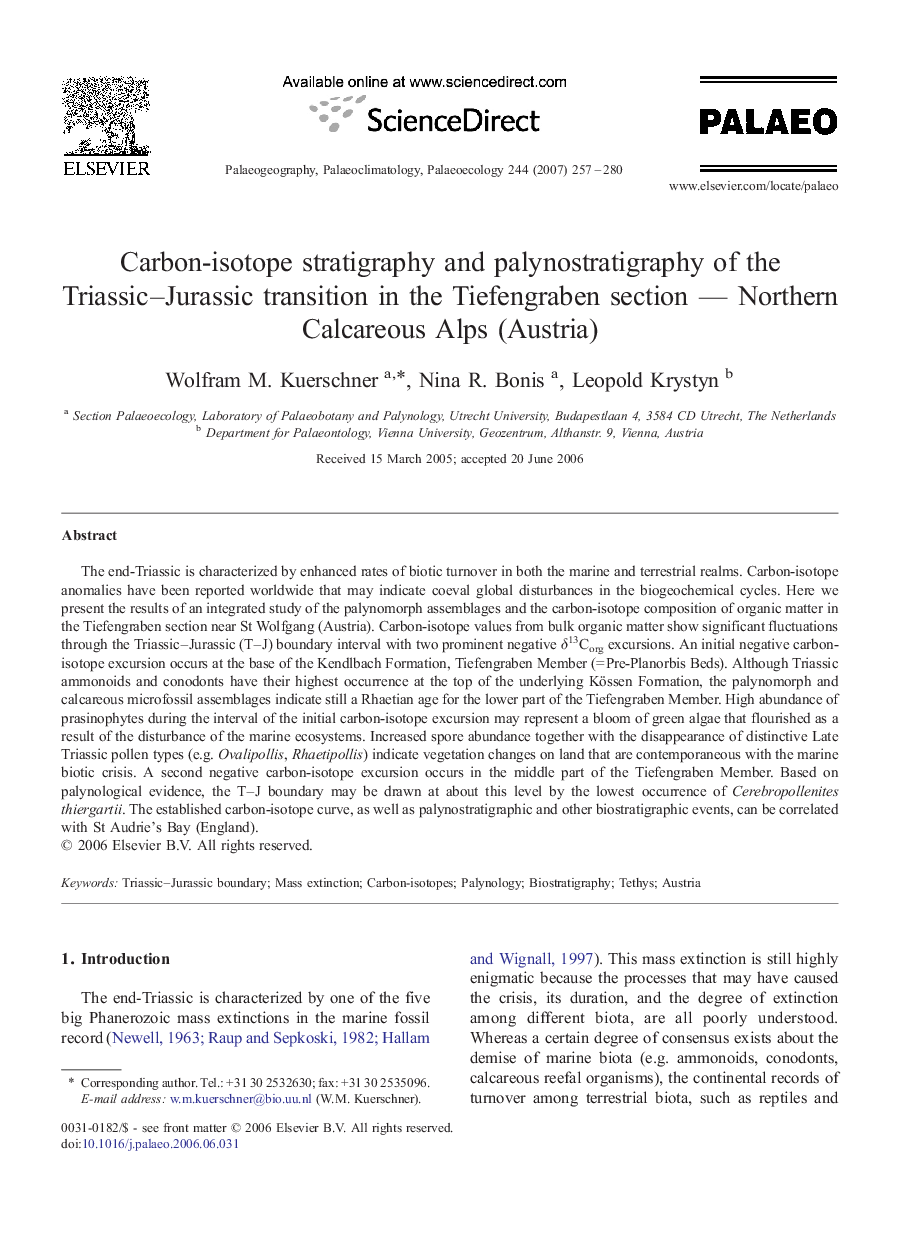| کد مقاله | کد نشریه | سال انتشار | مقاله انگلیسی | نسخه تمام متن |
|---|---|---|---|---|
| 4469233 | 1622359 | 2007 | 24 صفحه PDF | دانلود رایگان |

The end-Triassic is characterized by enhanced rates of biotic turnover in both the marine and terrestrial realms. Carbon-isotope anomalies have been reported worldwide that may indicate coeval global disturbances in the biogeochemical cycles. Here we present the results of an integrated study of the palynomorph assemblages and the carbon-isotope composition of organic matter in the Tiefengraben section near St Wolfgang (Austria). Carbon-isotope values from bulk organic matter show significant fluctuations through the Triassic–Jurassic (T–J) boundary interval with two prominent negative δ13Corg excursions. An initial negative carbon-isotope excursion occurs at the base of the Kendlbach Formation, Tiefengraben Member (= Pre-Planorbis Beds). Although Triassic ammonoids and conodonts have their highest occurrence at the top of the underlying Kössen Formation, the palynomorph and calcareous microfossil assemblages indicate still a Rhaetian age for the lower part of the Tiefengraben Member. High abundance of prasinophytes during the interval of the initial carbon-isotope excursion may represent a bloom of green algae that flourished as a result of the disturbance of the marine ecosystems. Increased spore abundance together with the disappearance of distinctive Late Triassic pollen types (e.g. Ovalipollis, Rhaetipollis) indicate vegetation changes on land that are contemporaneous with the marine biotic crisis. A second negative carbon-isotope excursion occurs in the middle part of the Tiefengraben Member. Based on palynological evidence, the T–J boundary may be drawn at about this level by the lowest occurrence of Cerebropollenites thiergartii. The established carbon-isotope curve, as well as palynostratigraphic and other biostratigraphic events, can be correlated with St Audrie's Bay (England).
Journal: Palaeogeography, Palaeoclimatology, Palaeoecology - Volume 244, Issues 1–4, 9 February 2007, Pages 257–280